There has been a lot of talk in the media about the beech mast and the mega mast. So what is it and why does in matter? Dr Graeme Elliot from the Department of Conservation shares his knowledge.
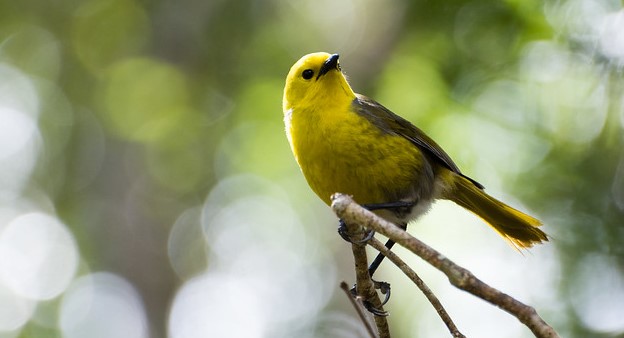
Graeme Elliott has been studying our native birds for about 45 years and he’s interested in how we protect them.
Doing this means understanding the cycles of beech mast. Using his knowledge we’ve put together a 101 on how the beech mast works. The first thing to understand is how much forest coverage we have:
- About a quarter of NZ is still covered in native forest, about 6.4 million hectares
- Two thirds of these forests have beech trees in them, so about 4 million hectares
- About half of these forests have nothing but beech trees, so about 2 million hectares of beech only forests
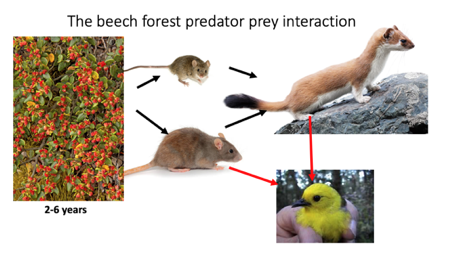
As a group the beech trees are our most abundant forest trees, and in the South Island most forests are beech forests. There’s a gap in the middle of the west coast where the glaciers wiped out the beech trees and there’s none on Stewart Island.
Beech trees don’t seed every year, instead they seed every 2 – 6 years. When they seed it is called masting, in beech mast years most trees flower and produce seed.
They flower in the spring and from March onwards the seeds are ripe and they fall till about June. Beech trees can produce millions of seeds. During a heavy seed fall about 50 million seeds will fall in a hectare – that’s about 250kg of seeds per hectare (think rugby field).
2019 is a big beech mast – with beech trees all over the country seeding. In addition to this the podocarps (rimu, kahikatea etc) are also seeding this year, these events don’t often coincide. Hence the term “megamast”.
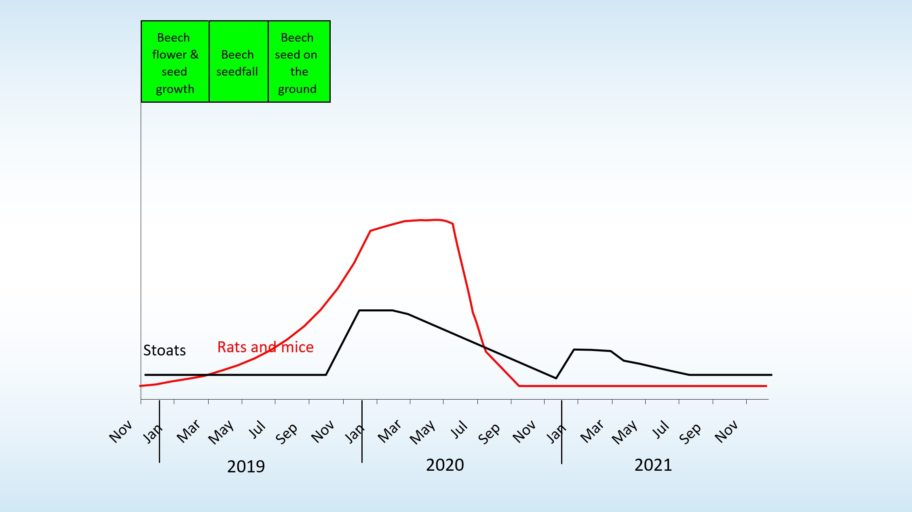
So how does the beech mast effect predators and native forest species?
When beech trees mast they produce huge amounts of seed and there is seed lying around in the winter. This is great for our native birds and provides heaps of food for them. Unfortunately, it also provides lots of food for rats and mice whose populations significantly increase or plague. As a result of the high rodent numbers, a few months later you get a plague of stoats whose population has increased due to feasting on rodents. As the rodent populations decrease, the stoat numbers reduce in response but not before they have feasted on our native species.
Rodent and stoat plagues occur every time the beech seeds, but in some forests only the mice, not the rats, plague. Predator plagues with stoats and rats are worse for forest birds than are predator plagues with stoats and mice, because stoats and rats are a significant predator of forest birds, whereas mice probably only have a small effect on forest birds.

So if you are a stoat sensitive bird like a mohua over multiple years of seeding you see peaks and troughs of population that align with mast years. Some years are stoat and mouse only plagues (small arrows) and less frequently you get a more devastating stoat and rat plague (bigger arrows). The overall gradual population decline can result in a localised extinction.
We have lost a lot of species from our mainland forests, even common species are less common than they used to be. If we do a good job of predator control all the common ones will become more common and even those on the brink of extinction can recover.
One of the innovations for pest control in beech forests is that we are able to predict when beech masts are going to happen. Beech trees produce seeds when a summer is warmer than the preceding summer – they then flower and seed in the next summer.
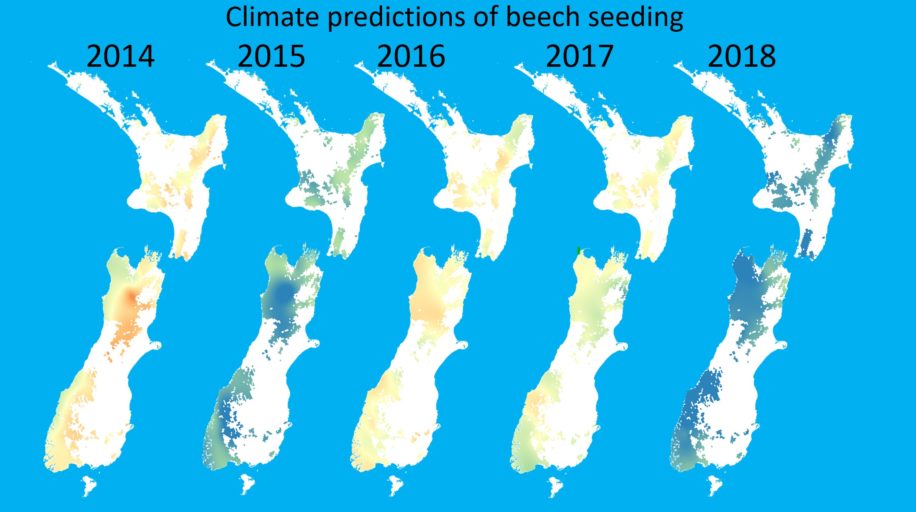
Since 2012 we’ve been much more confidently able to predict beech mast. 2014 was a significant mast year and climate predictions showed us the extent of the seeding event.
As you can see from the climate predictions 2019 is going to be a significant masting event. This masting event is one of the most extensive ever recorded.
Predictions of seedfall are only predictions and may not happen. To see what’s actually going on, DOC staff use seed snipping to measure the actual extent of seeding. These samples are taken from a number of trees and then the seed is counted by hand. DOC takes samples from the tops of trees each February – just before the seeds start to fall. In 2019 DOC performed Beech seed snipping at 144 beech sites and 54 rimu sites.
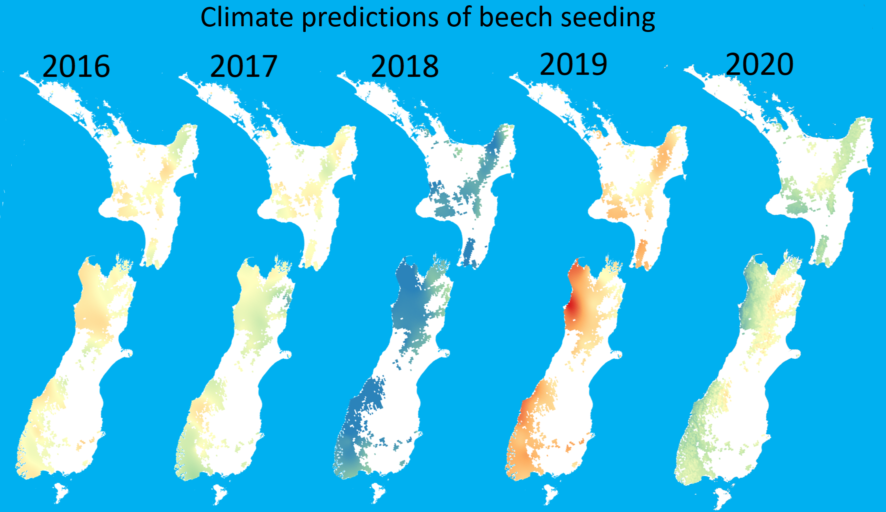
DOC also has over 30,000 tracking tunnels across the country to monitor what is happening with predator numbers. The results from this is will also feed into the decision of what are priorities sites and what predator control needs to be undertaken at each site.
With thanks to Graeme Elliott from the Department of Conservation for sharing his knowledge and images. Find out more about DOC’s predator control programme at Tiakina Ngā Manu.

